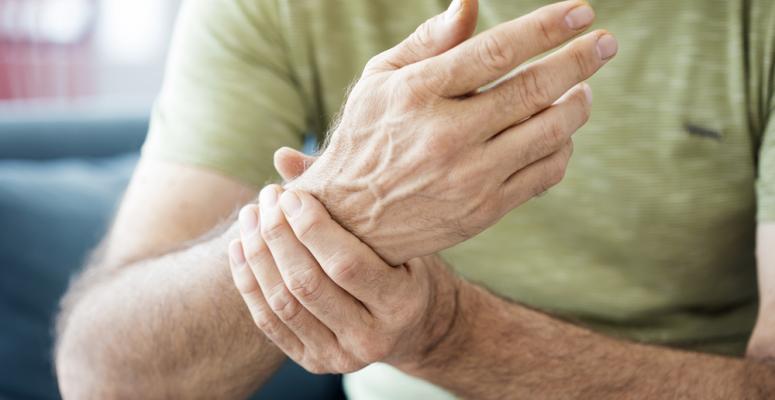
About 20% of U.S. adults deal with chronic pain on a daily basis. A major source of that chronic pain is found in the joints. Chronic joint pain is often diagnosed as arthritis, or a general term for inflammation of the joints and surrounding tissue. There are over 100 types of arthritis, with osteoarthritis being the most common type. Symptoms that could indicate arthritis can include:
- Redness and swelling around joints.
- Stiffness.
- Achiness.
- Sharp pain.
- Joint weakness.
Doctors can diagnose patients with a specific type of arthritis through a series of blood tests that check for signs of infection and inflammation. Imaging tests like MRI scans and X-rays can check joint damage you already have and whether they are affecting your cartilage or your bones. These tests can help doctors tailor a treatment plan, including types of medication, to a specific type of arthritis. If you were diagnosed with arthrosis, you may not understand what makes it different from arthritis. After all, the terms sound similar and share many of the same symptoms. However, it can be crucial to your health to know the difference between these two terms so that you can seek proper treatment and better understand your condition.
What is arthritis?
Arthritis is a general term that encompasses dozens of types of arthritis. It can be a helpful term to use when explaining that a patient is experiencing joint inflammation. However, several conditions can fall into the arthritis category. A patient’s arthritis diagnosis needs to be specific so that treatment can be targeted. For example, some arthritis types can cause inflammation in other areas of the body, outside of the joints, like in the organs and muscles. In these cases, treatments need to be more rigorous. Unfortunately, doctors don’t know the causes behind many arthritis types. Arthritis can appear spontaneously or genetically, like after puberty in the case of juvenile arthritis, or it can develop with age. The following causes can be behind an arthritis diagnosis:
- Joint injury.
- Wear and tear of joint cartilage.
- Metabolic abnormalities.
- Infection.
- Autoimmune disease.
Meanwhile, some of the most common types of arthritis include:
- Osteoarthritis.
- Rheumatoid arthritis.
- Gout.
- Psoriatic arthritis.
An estimated 22% of adults have been diagnosed with arthritis or related conditions. By 2040, it is estimated that 26% of U.S. adults aged 18 years or older will be diagnosed with arthritis. Knowing the different types of arthritis can help you know how your diagnosis may differentiate from others.
What is arthrosis?
While arthritis is an umbrella term, arthrosis is a specific type under that umbrella. Arthrosis often is used interchangeably with osteoarthritis, or a type of arthritis in which the cartilage between your joints breaks down. Cartilage acts as a cushion between your joints so that the bones can easily glide over each other. When the cartilage breaks down, however, the bones in your joints can grind against each other and lead to sharp pain. Some symptoms specific to osteoarthritis can include:
- Bone spurs.
- Swelling.
- Loss of mobility.
Your cartilage can deteriorate over time with age and can even be completely dissolved. That’s why osteoarthritis is mainly present in the older population. While arthrosis is a type of arthritis that can affect any joint in your body, it can be common for it to affect the joints of your knees, hands, neck and hips. To help determine whether you have arthrosis, your doctor may perform a joint fluid analysis in which a needle draws fluid from your affected joint. This fluid is then tested for inflammation and whether its cause is osteoarthritis.
How can arthritis and arthrosis be treated?
Unfortunately, damage to your joints caused by arthritis types such as arthrosis cannot be reversed. However, the condition can be slowed down, and future damage can be stopped. The following methods and therapies can be used to treat arthritis types such as arthrosis:
- Medication.
- Physical therapy.
- Occupational therapy.
- Steroid injections.
- Surgery, like joint replacement or alignment.
Alliance PTP is ready to help you find top-notch PT for your arthritis or arthrosis
Is your diagnosed arthritis holding you back? At Alliance Physical Therapy Partners, we’re proudly bringing together physical therapy practices across the country to help people get the high-quality PT they need. Want to see a physical therapist in person? We can put you in touch with an Alliance PTP partner that’s close to you and that can help you address your arthritis and arthrosis concerns. Not keen on in-person PT sessions or not close to an Alliance PTP partner? No worries. We also offer effective and affordable virtual physical therapy through our Agile Virtual Physical Therapy platform. Contact our team today so we can help you find the most effective physical therapy services for your arthritis.
